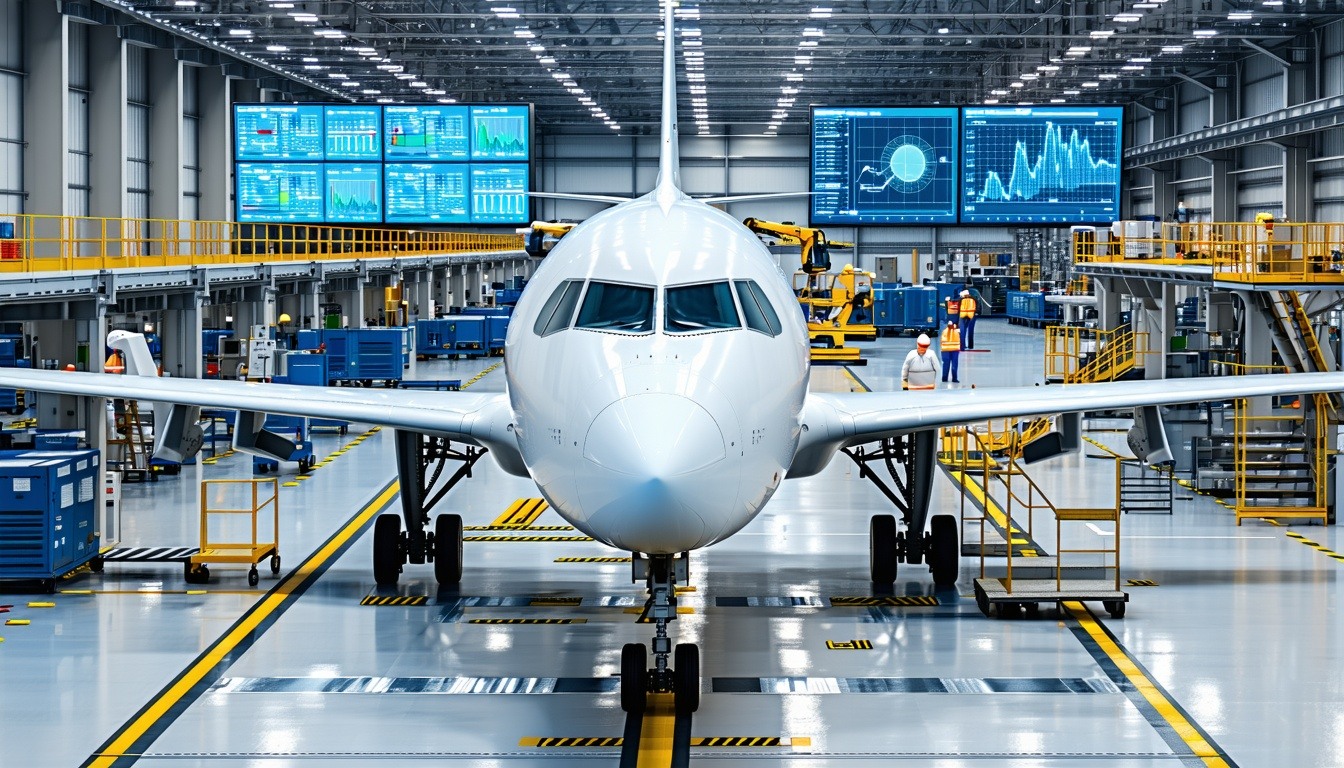Future of Aerospace Manufacturing: Compelling ERP System Trends You Can't Ignore
Aerospace and defense manufacturers face growing pressure to boost efficiency, manage intricate supply chains, and keep up with strict regulatory...
2 min read
 Eric Smith
:
Dec 1, 2025 12:00:00 AM
Eric Smith
:
Dec 1, 2025 12:00:00 AM
Current market conditions are bringing a new kind of turbulence to the aviation industry. While passenger numbers have stabilized, 2026 presents a new set of challenges: volatile fuel prices, stringent Sustainable Aviation Fuel (SAF) mandates, and fragile global supply chains that threaten the availability of critical components.
In this environment, efficiency isn't just about saving money—it's about survival. Airlines and MROs are looking for new ways to cut costs, optimize turnaround times (TAT), and maximize asset availability to offset these rising operational pressures.
Shrinking profits have forced industry leaders to rethink their approach to aviation maintenance. The traditional model—letting the Original Equipment Manufacturer (OEM) maintain the airline fleet—is changing. Independent Maintenance, Repair, and Operations shops (MROs) are increasingly capturing market share.
Why? Because MROs have been agile. They have been quick to adopt sophisticated aviation business management software that allows them to return aircraft to service faster than legacy OEM processes.
Today, over 60% of heavy aircraft maintenance is outsourced. According to Aviation Week’s Fleet & MRO Forecast, the military fleet maintenance market alone is expected to exceed $1.1 trillion over the next decade. To compete, independent MROs must accurately bid, plan, and release aircraft on time—a feat that requires a specialized Aerospace ERP.
An ERP streamlines business processes through integration, improved visibility, and automation. But for an MRO, a generic ERP won't cut it. You need a system that understands "Tail Numbers," "Rotables," and "Line Maintenance."
Superior Contract Management: Automation makes the collaborative bid process swift and error-free. Analytics assess how a contract will impact sales, materials, and billing, ensuring projects don't go over budget.
Production Planning and Control: ERPs support the routing, scheduling, and execution of complex workflows. By introducing better planning capabilities, companies can work cost-effectively with minimal staff, addressing labor shortages head-on.
Comprehensive Materials Management: Supply chain management is eased by an ERP that not only schedules jobs but assesses inventory in real-time to ensure every rivet and turbine blade is available before the technician walks onto the floor.
Continuous Improvement: A flexible ERP accommodates new workflow processes required by next-gen aircraft models and advanced materials, ensuring your shop floor evolves with the industry.
In 2026, the industry is moving beyond "preventive" maintenance to "predictive" maintenance. Modern Aerospace ERPs now integrate Digital Twin technology—creating a virtual replica of a physical aircraft.
By feeding real-time sensor data into the ERP, MROs can predict component failures before they happen. This allows for "Just-in-Time" maintenance that prevents costly unscheduled downtime, a critical differentiator in a competitive market.
IFS ERP has industry-specific solutions built directly into its core, not bolted on as an afterthought. It brings full visibility into every stage of operation, from the hangar floor to the boardroom.
IFS Applications offer management support for four core processes: Service & Asset, Manufacturing, Projects, and Supply Chain. MROs choosing IFS have experienced:
60% reduction in work package creation
30% improvement in base maintenance productivity
50% reduction in depot TAT
18% improvement in timely quoting and invoicing
For airframe MROs and fleet operators, IFS Maintenix offers specialized tools that support regulatory safety compliance (Part 145 and Part M) right out of the box.
IFS Maintenix Fleet Planner: Replaces spreadsheets with automated long-range planning. It models "what-if" scenarios to predict how fleet growth or capacity changes will impact maintenance schedules.
IFS Maintenix Line Planner: Allows for granular planning at specific stations, ensuring that labor and parts are aligned with flight schedules in real-time.
While IFS develops feature-rich software, the application is only as effective as its implementation. Astra Canyon Group specializes in IFS solutions for the Aerospace & Defense industry. We understand the difference between a "work order" and a "heavy check," and we know how to configure IFS to meet strict ITAR and FAA compliance standards.
Ready to modernize your maintenance operations? Contact us today to schedule a test drive of IFS Maintenix or IFS Cloud and see how we can help your business soar.

Aerospace and defense manufacturers face growing pressure to boost efficiency, manage intricate supply chains, and keep up with strict regulatory...

Welcome to our comprehensive guide on the top cloud-based ERP systems for manufacturing in 2025! If you're a manufacturing company seeking to...

1 min read
Are you grappling with the complexities of integrating financial technology within your chemical manufacturing operations? In an industry where 43%...